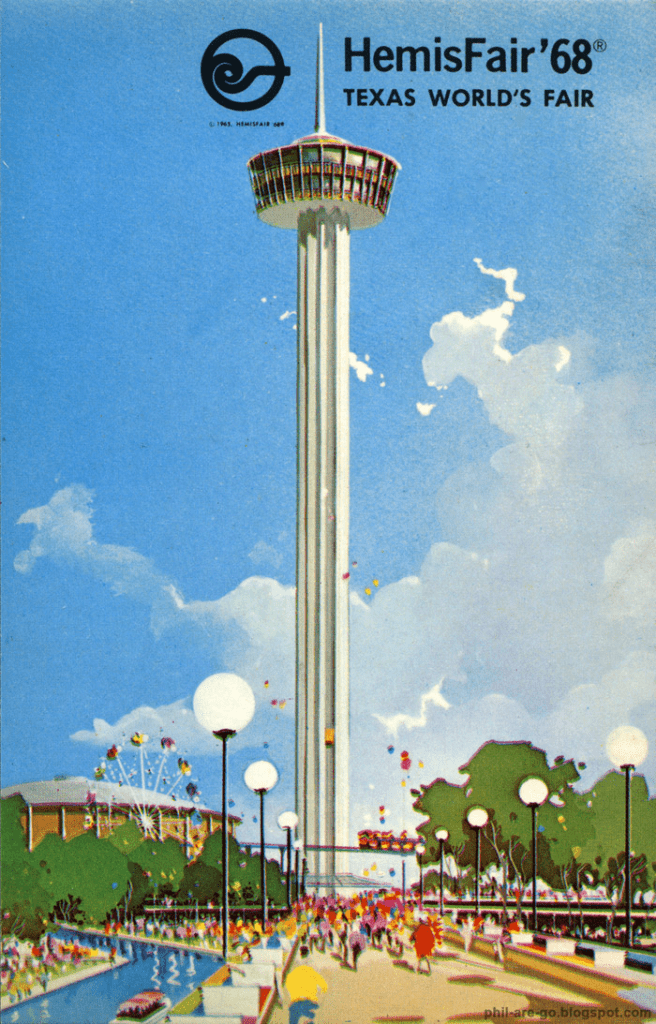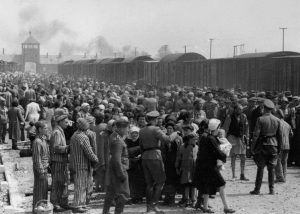The Space Needle in downtown Seattle,1 the Unisphere in the heart of New York City,2 the Eiffel Tower in bustling Paris, France3 — these are but a couple examples of the monuments left behind by the presence of a world’s fair. By the same token, it was the 1968 World’s Fair, held in San Antonio, Texas, that prompted the creation of the famed Tower of the Americas. Since its inception, the city of San Antonio has always represented a junction of many different cultures. Within the city limits, the people of San Antonio have experienced a plethora of struggles, victories, and losses. Determined to share the city’s unique trials and tribulations with the world, a man named Jerome K. Harris proposed that a world’s fair be held to celebrate the 250th anniversary of San Antonio’s establishment.4
Harris was no stranger to the idea of money and power, but he could not push forward such a large-scale event without the help of some other notable businessmen and policymakers from San Antonio. Accordingly, he searched long and far for a group of distinguished members of the San Antonio community who he believed could help him achieve his end goal. After only a few months, Harris had put together a group of well known individuals, including William R. Sinkin, H. B. “Pat” Zachry, James Gaines, and Henry B. Gonzales, to name a few. Thanks to a combination of San Antonio underwriters, voter-approved city bonds, Urban Renewal agency funds, and the Texas State Legislature, the group was eventually able to raise $11,375,000 towards the project. Although the group had done a great job raising funding for the event, it was actually the international community that allowed Hemisfair to reach a grand total of $156,000,000. This grand-scale event would ultimately spawn many different buildings, including the Convention Center and Arena, the Institute of Texan Cultures, the John H. Wood Federal Courthouse and, of course, the aforementioned Tower of the Americas.5
With the funding secured, the group turned its attention to planning the event that would, unbeknownst to them, eventually cement San Antonio as the top tourist destination in Texas. In order to plan such a large-scale event like this one, the group found itself catering to many different international interests. Finally, after months of hard work and intensive planning, the Paris-based Bureau of International Expositions awarded the city of San Antonio with official fair status in November 1965, thus recognizing the first world’s fair not only in the state of Texas but in the whole southern half of the United States.6

On April 6, 1968, San Antonio locals and visitors alike awoke to a perfect 65-degree morning. The weather made for a perfect day to make history. As the many visitors stepped onto the 96.2-acre fairground on the southeastern edge of downtown San Antonio, the first thing they noticed was the almost endless amount of colorful tents set up for vendors of food, games, and education. Approximately twenty government agencies and ten private corporations from around the world participated and sponsored their own entertainment and education pavilions in order to convey the theme of “A Confluence of Cultures.” HemisFair would continue for six months, finally coming to an end on October 6, 1968. Within these six months, more than six million people of varying nationality and culture would attend the fair. In total, the fair boasted representation for a total of thirty different nations.7 In this regard, HemisFair was truly a confluence of cultures, a bastion of the idea of diversity that still resides in San Antonio today.
- American Decades Primary Sources, 2004, s.v. “Space Needle at World’s Fair.” ↵
- Encyclopedia of the Great Depression, 2004, s.v. “New York World’s Fair (1939–1940),” by Isadora Anderson Helfgott. ↵
- Dorling Kindersley, 2012, s.v. “DK Eyewitness Travel Guide: Paris.” ↵
- Cities of the United States, 2012, s.v. “San Antonio.” ↵
- Cities of the United States, 2012, s.v. “San Antonio.” ↵
- Dictionary of American History, 2003, s.v. “World’s Fairs,” by Robert Rydell. ↵
- American Decades, 2001, s.v. “World’s Fairs.” ↵



22 comments
Nelly Perez
I’ve always seen the Tower of America’s and sometimes would compare it to Seattle’s Space Needle. I knew the Tower was always there, but now I know who it was made by and what led to the creation of the tower. Jerome proposed hosting the World’s Fair in San Antonio to celebrate an anniversary and he managed to raise enough money with help to launch the project. Amazing article!
Octaviano Ibarra
It truly is beautiful how much history can change the view of anything. After the many times I have gone to HemisFair whether it was with my friends, by myself, day or night I will now see and enjoy the history I have learned that the park will forever carry with it. The next time I go I could even bother whoever I go with this history of the tower and park. Even seeing the Tower no matter how far I could point and explain how it came to be.
Eric Ortega Rodriguez
As a person coming from a small town, I have never heard of 1968 World’s Fair, nonetheless did I know the meaning behind the Tower of the Americas. This article was over a great topic because I strongly believe it is over something not many people, including San Antonio natives, know about. I found interesting how many contributors assisted in the making of this monument. Overall, this was a great article to read. Great work.
Nadia Carrasco
Moving to San Antonio just a few months ago i had never seen the city before. After a few weeks living on campus I decided to go out and check out some of the famous landmarks, one being the tower of Americas. This article gave me so much history I would have never known. It is so cool to me that San Antonio has a landmark that represents America and all the different cultures within it. Overall very interesting and educational article!
Thomas Fraire
I gave a tour in downtown San Antonio the last semester and one of our stops was this location. It is really cool many ethnicities, cultures were placed all into one area. This article was really well written and captured the essence of San Antonios’s rich history! It was a great article it flowed smoothly and was really enjoyable
Dalton Moy
I have lived in San Antonio my entire life, yet there are some parts of the city that I had never looked into. This just so happened to be one of them. I seen the Tower everyday when driving on the highway when coming to class, but I never did learn to much about its origin. I am so glad to have read this article on the HemisFair. San Antonio is still a place where so many cultures can be experience, all in one place. I am very glad to live in such an interesting and historical city.
Isaiah Torres
I’ve lived in San Antonio my whole life and love the city I’m from. I’ve never heard of this event and I’ve never been to hemisphere park. But this article makes me want to go visit and see what I’m missing out on. This was a really cool article filled with facts and interesting things to learn about my own city.
Leeza Cordova
I have never heard of this event before, and it was very cool to learn about this happening in my own city. The amount of money that they were able to collect was crazy and also how many people were able to visit and enjoy the city. I never really knew the back history to the tower of america’s, but connecting this article to the landmark makes sense now.
Krystal Rodriguez
I’ve lived in San Antonio my whole life and had never heard of this. I am so amazed at the background of the Hemisfair tower. I never knew it was so rich in history. I dont know why I thought the tower was much older but knowing its history now I appreciate it more. This article educated me very well and it was an amazing read.
Amariz Puerta
The picture really grabbed my attention and made me want to read it. Looking back at it having family in San Antonio and never visiting the HemisFair, seem a little bit weird to me. I love that this monument is able to bring us cultures, people, and ideas together to celebrate America. Loved this article so much!